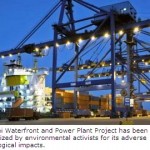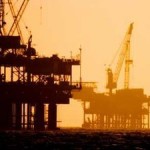
Munich, Germany / Singapore City, Singapore – The Asian Green City Index – a study commissioned by Siemens and carried out over the past few months by the Economist Intelligence Unit (EIU) – analyzed the aims and achievements of 22 major Asian cities with respect to environmental and climate protection. Singapore City stands out in particular for its ambitious environmental targets and its efficient approach to achieving them. In other Asian cities as well, however, environmental awareness and climate protection guidelines are playing an increasingly important role. “The Asian Green City Index supports cities in their efforts to expand their infrastructures on a sustainable basis. We want to enable Asia’s up-and-coming urban centers to achieve healthy growth rates coupled with a high quality of life,” said Barbara Kux, member of the Managing Board of Siemens AG and the company’s Chief Sustainability Officer.
The Asian Green City Index examines the environmental performance of 22 major Asian cities in eight categories: energy and CO2, land use and buildings, transport, waste, water, sanitation, air quality and environmental governance. The EIU developed the methodology in cooperation with leading urban experts around the world, including representatives of the OECD, the World Bank and Asia’s regional network of local authorities, CITYNET.
“The study of Asian cities shows one thing very clearly: higher income does not necessarily mean higher resource consumption. While resource consumption increases substantially up to an annual gross domestic product (GDP) of about € 15,000 per capita, it drops again when income rises beyond this,” said Jan Friederich, Research Head of the EIU study. Why? In the prosperous Asian cities, environmental awareness is greater and infrastructures are more efficient. These cities are actively cutting their consumption of natural resources and are, thus, developing more sustainably. “In addition, cities that performed well in the Index are characterized by their ability to successfully implement environmental projects and consistently enforce regulations,” explained Friederich.
Also among the study’s particularly gratifying results were the following:
- Environmental awareness is growing, and the majority of the Asian cities have already introduced comprehensive environmental guidelines.
- Average annual CO2 emissions per capita are 4.6 tons in the Asian cities, and below the corresponding figure for Europe (5.2 tons per capita and year).
- The 22 Asian cities produce an average of 375 kilograms of waste per capita and year, less than in Latin America (465 kilograms) and Europe (511 kilograms).
According to the study, the biggest challenges facing Asia’s cities are in the following areas:
- Air pollution levels are relatively high in all the cities studied, regardless of income. The average values for all the cities substantially exceed WHO standards.
- Asia’s metropolises have much catching up to do in the area of renewable energies, which on average account for 11 percent of the total electricity generated in the 22 cities. By comparison, the average in Latin America is 64 percent – due to the high proportion of hydroelectric power plants there.
The progressive rural exodus in Asia is unprecedented in human history. According to the United Nations Population Division, the proportion of Asia’s population living in cities has grown in the last 20 years by around a third to over 40 percent. In the last five years alone, the number of inhabitants in Asian cities has been increasing by about 100,000 a day. And this development will continue in the years to come. In China alone, experts predict that by 2025, there will be well over 200 cities with a population of over a million. In 2011, there are just under 90, while Europe currently has 25 cities of that size.
The increasing urbanization is having an enormous impact on the infrastructure: with the additional number of inhabitants, correspondingly more energy, clean water, transportation and energy-efficient homes are required. The Asian Development Bank estimates that to cope with the influx, the Asian cities must for example build 20,000 new homes and 250 kilometers of road and provide transportation infrastructure and an extra six million liters of drinking water, all on a daily basis. In addition, the cities are the main emitters of harmful greenhouse gases: Cities are the growth engines of the future, but they are also responsible for 75 percent of worldwide energy consumption and for around 80 percent of the human CO2 emissions. “The battle against climate change will be decided in cities. This applies to Asia, with its booming conurbations, more than anywhere else on earth. But only green cities will make life worth living over the long term,” said Barbara Kux.
With its Environmental Portfolio, Siemens is the ideal partner for sustainable city development, which is based on energy and resource efficiency. The company has the largest and most comprehensive range of green technologies for the environmentally friendly development of infrastructure – from efficient and clean energy generation, transmission and use to public transport and water treatment systems. In fiscal 2010 alone, the company generated revenue of around € 28 billion with its Environmental Portfolio. Some of this came from projects in Asian cities, involving for example the expansion and modernization of their railway networks, urban power supply systems and building automation.
The scope of the Green City Index is unique in the world. Asia is already the third region that has been analyzed for Siemens in this way by the EIU. The series began in 2009 with the European Green City Index, which identified Copenhagen (Denmark) as the greenest metropolis. In 2010, this was followed by the Latin American Green City Index, where Curitiba (Brazil) came out on top. Similar studies are planned for other parts of the world.
Overview of the overall Asian Green City Index results:


About Siemens AG
Siemens AG (Berlin and Munich) is a global powerhouse in electronics and electrical engineering, operating in the industry, energy and healthcare sectors. For over 160 years, Siemens has stood for technological excellence, innovation, quality, reliability and internationality. The company is the world’s largest provider of environmental technologies, generating some € 28 billion – more than one-third of its total revenue – from green products and solutions. In fiscal 2010, which ended on September 30, 2010, revenue totaled € 76 billion and net income € 4.1 billion. At the end of September 2010, Siemens had around 405,000 employees worldwide.
Source: Siemens Press Release dated February 14, 2011.














